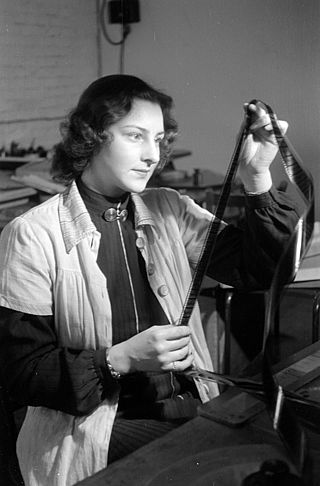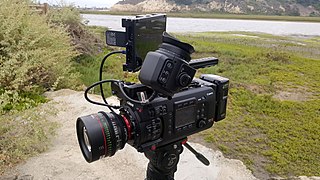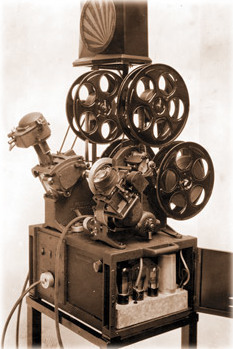
Film editing is both a creative and a technical part of the post-production process of filmmaking. The term is derived from the traditional process of working with film which increasingly involves the use of digital technology. When putting together some sort of video composition, typically, you would need a collection of shots and footages that vary from one another. The act of adjusting the shots you have already taken, and turning them into something new is known as film editing.

Film stock is an analog medium that is used for recording motion pictures or animation. It is recorded on by a movie camera, developed, edited, and projected onto a screen using a movie projector. It is a strip or sheet of transparent plastic film base coated on one side with a gelatin emulsion containing microscopically small light-sensitive silver halide crystals. The sizes and other characteristics of the crystals determine the sensitivity, contrast and resolution of the film. The emulsion will gradually darken if left exposed to light, but the process is too slow and incomplete to be of any practical use. Instead, a very short exposure to the image formed by a camera lens is used to produce only a very slight chemical change, proportional to the amount of light absorbed by each crystal. This creates an invisible latent image in the emulsion, which can be chemically developed into a visible photograph. In addition to visible light, all films are sensitive to X-rays and high-energy particles. Most are at least slightly sensitive to invisible ultraviolet (UV) light. Some special-purpose films are sensitive into the infrared (IR) region of the spectrum.

Keykode is an Eastman Kodak Company advancement on edge numbers, which are letters, numbers and symbols placed at regular intervals along the edge of 35 mm and 16 mm film to allow for frame-by-frame specific identification. It was introduced in 1990.

Steenbeck is a company that manufactures flatbed editors. Steenbeck is a brand name that has become synonymous with a type of flatbed film editing suite which is usable with both 16 mm and 35 mm optical sound and magnetic sound film.

8 mm film is a motion picture film format in which the film strip is eight millimetres (0.31 in) wide. It exists in two main versions – the original standard 8 mm film, also known as regular 8 mm, and Super 8. Although both standard 8 mm and Super 8 are 8 mm wide, Super 8 has a larger image area because of its smaller and more widely spaced perforations.

Super 8 mm film is a motion-picture film format released in 1965 by Eastman Kodak as an improvement over the older "Double" or "Regular" 8 mm home movie format.

A movie camera is a type of photographic camera that rapidly takes a sequence of photographs, either onto film stock or an image sensor, in order to produce a moving image to display on a screen. In contrast to the still camera, which captures a single image at a time, the movie camera takes a series of images by way of an intermittent mechanism or by electronic means; each image is a frame of film or video. The frames are projected through a movie projector or a video projector at a specific frame rate to show the moving picture. When projected at a high enough frame rate, the persistence of vision allows the eyes and brain of the viewer to merge the separate frames into a continuous moving picture.
Video editing is the post-production and arrangement of video shots. To showcase perfect video editing to the public, video editors must be reasonable and ensure they have a superior understanding of film, television, and other sorts of videography. Video editing structures and presents all video information, including films and television shows, video advertisements and video essays. Video editing has been dramatically democratized in recent years by editing software available for personal computers. Editing video can be difficult and tedious, so several technologies have been produced to aid people in this task. Overall, video editing has a wide variety of styles and applications.

In film and television production, B-roll, B roll, B-reel or B reel is supplemental or alternative footage intercut with the main shot. The term A-roll, referring to main footage, has fallen out of use.
A sound editor is a creative professional responsible for selecting and assembling sound recordings in preparation for the final sound mixing or mastering of a television program, motion picture, video game, or any production involving recorded or synthetic sound. The sound editor works with the supervising sound editor. The supervising sound editor often assigns scenes and reels the sound editor based on the editor's strengths and area of expertise. Sound editing developed out of the need to fix the incomplete, undramatic, or technically inferior sound recordings of early talkies, and over the decades has become a respected filmmaking craft, with sound editors implementing the aesthetic goals of motion picture sound design.

A movie projector is an opto-mechanical device for displaying motion picture film by projecting it onto a screen. Most of the optical and mechanical elements, except for the illumination and sound devices, are present in movie cameras. Modern movie projectors are specially built video projectors.
Sync sound refers to sound recorded at the time of the filming of movies. It has been widely used in movies since the birth of sound movies.

A Moviola is a device that allows a film editor to view a film while editing. It was the first machine for motion picture editing when it was invented by Iwan Serrurier in 1924.
In filmmaking, dailies or rushes are the raw, unedited footage shot during the making of a motion picture. The term "dailies" comes from when movies were all shot on film because usually at the end of each day, the footage was developed, synced to sound, and printed on film in a batch for viewing the next day by the director, selected actors, and film crew members. After the advent of digital filmmaking, "dailies" were available instantly after the take and the review process was no longer tied to the overnight processing of film and became more asynchronous. Now some reviewing may be done at the shoot, even on location, and raw footage may be immediately sent electronically to anyone in the world who needs to review the takes. For example, a director can review takes from a second unit while the crew is still on location or producers can get timely updates while travelling. Dailies serve as an indication of how the filming and the actors' performances are progressing. The term was also used to describe film dailies as "the first positive prints made by the laboratory from the negative photographed on the previous day".
In filmmaking, video production, animation, and related fields, a frame is one of the many still images which compose the complete moving picture. The term is derived from the historical development of film stock, in which the sequentially recorded single images look like a framed picture when examined individually.
Negative cutting is the process of cutting motion picture negative to match precisely the final edit as specified by the film editor. Original camera negative (OCN) is cut with scissors and joined using a film splicer and film cement. Negative cutting is part of the post-production process and occurs after editing and prior to striking internegatives and release prints. The process of negative cutting has changed little since the beginning of cinema in the early 20th century. In the early 1980s computer software was first used to aid the cutting process. Kodak introduced barcode on motion picture negative in the mid-1990s. This enabled negative cutters to more easily track shots and identify film sections based on keykode.

High-speed photography is the science of taking pictures of very fast phenomena. In 1948, the Society of Motion Picture and Television Engineers (SMPTE) defined high-speed photography as any set of photographs captured by a camera capable of 69 frames per second or greater, and of at least three consecutive frames. High-speed photography can be considered to be the opposite of time-lapse photography.

Standard 8 mm film, also known as Regular 8 mm, Double 8 mm, Double Regular 8 mm film, or simply as Standard 8 or Regular 8, is an 8 mm film format originally developed by the Eastman Kodak company and released onto the market in 1932.
Articles related to the field of motion pictures include:

A sound follower, also referred to as separate magnetic, sepmag, magnetic film recorder, or mag dubber, is a device for the recording and playback of film sound that is recorded on magnetic film. This device is locked or synchronized with the motion picture film containing the picture. It operates like an analog reel-to-reel audio tape recording, but using film, not magnetic tape. The unit can be switched from manual control to sync control, where it will follow the film with picture.
















